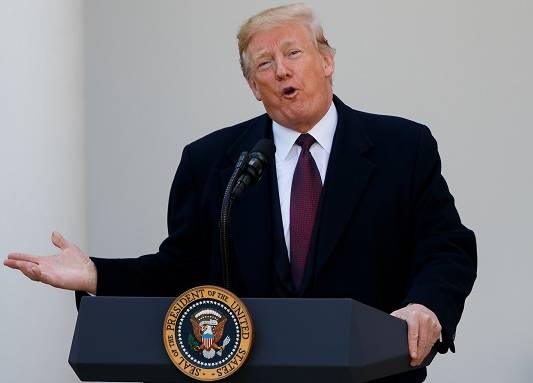
by Editor | May 25, 2021 | Opinions

Frank Islam & Ed Crego
BY Frank Islam & Ed Crego
On April 25, a bevy of world leaders met virtually to discuss the development and production of vaccines and other critical tools to combat Covid-19. Global leaders who participated in the event, hosted by French President Emmanuel Macron, among others, included the heads of state of Spain, South Africa, Germany, Vietnam, and Costa Rica.
Representatives of one nation were conspicuous by their absence. The United States — the country that’s been ravaged most by the pandemic, accounting for nearly a third of all the confirmed global Covid-19 cases and more than a fourth of the total fatalities worldwide — did not participate.
The United States wasn’t at the event because one of the co-hosts was the World Health Organization (WHO). Other co-hosts, in addition to Macron, were the President of the European Commission and the Bill & Melinda Gates Foundation.
Unfortunately, the WHO, which is responsible for monitoring global public health and overseeing pandemic responses, is the latest multilateral entity to be in President Donald Trump’s purgatory. The president announced on April 15 that he was halting funding for the UN agency for 60 days, pending an investigation into the organization’s handling of the coronavirus pandemic. The United States is the WHO’s largest funder, contributing $400 million last year.
Trump’s action will impact not only WHO. It will also have an effect on the U.S. scientists and doctors working around the clock to develop vaccines to slow down Covid-19. Their heroic efforts will be hamstrung by Trump’s decision to halt funding for WHO, which is a UN agency.
For more than seven decades, this UN agency has led humanity’s fight against epidemics and pandemics. It successfully coordinated the global fight against a number of diseases, ranging from smallpox and polio to HIV/AIDS, Ebola, and malaria. It has also helped contain many deadly diseases from entering the U.S. mainland. Among the many important roles WHO performs is preparing countries for health emergencies and, when such emergencies occur, detecting and responding to them.
At a time when the United States is losing, on an average, more than 2,000 Americans a day to the Coronavirus, squeezing an organization that is spearheading the fight against the disease and declining to be part of the process to speed up and deploy vaccines to tackle the deadly virus is reckless. It puts U.S. public health and national security at additional unnecessary risk.
As of May 1, the official number of Americans who have tested positive for Coronavirus has reached 1.1 million and U.S. fatalities have topped 63,000, outnumbering total U.S. deaths in the Vietnam War — 58,209 — and the actual number of victims is almost certainly significantly higher. The United States lost more men and women in only three wars: The Civil War and the two World Wars.
This is an enormous human cost. The Coronavirus should teach America and other nations around the world two cardinal lessons.
First, that public health is a vital part of national security. A pathogen originating in a distant corner of earth can destroy economies and ravage communities. Second, we were, and are, ill-prepared to tackle a pandemic like the coronavirus.
On October 24, 2019, roughly two months before the coronavirus began its deadly dance in the central Chinese city of Wuhan, three highly regarded organizations released a Global Health Security Index (GHSI or index) in Washington, DC, ranking countries based on their preparedness to face a pandemic.
The index, a joint project of the Nuclear Threat Initiative, the Johns Hopkins Center for Health Security and the Economist Intelligence Unit, all highly reputable organizations, examined the health security capabilities of 195 countries worldwide. These groups issued a stern warning, pointing out there are “severe weaknesses in countries abilities to prevent, detect, and respond to significant disease outbreaks” and stating unequivocally that “health security is fundamentally weak around the world, and no country is fully prepared to handle an epidemic or pandemic.”
The United States ranked first on the GHSI with an overall value of 83.5. It fell short, however, in some critical indicator areas including: access to health care where it ranked 175 out of 195; socio-economic resilience with a ranking of 59; and exercising response plans with a ranking of 54.
The deficiencies in these areas, in conjunction with the lack of presidential and federal leadership, help to explain why the U.S. has stumbled in responding to the Covid-19 onslaught. Now nearly 120 days into the onslaught of the pandemic, no country in the world has suffered from the disease worse than the United States.
Trump’s temporary suspension of WHO funding indicates that the president is more interested in scoring political points and running for re-election than serving U.S. national interests and the larger public health.
This should not be the case. The last thing that the United States should do in the middle of a planetary pandemic is to threaten to deprive the WHO of the funding that it needs to be the first line of defense and the world’s go-to resource for combating this pandemic.
This should not be a time for the United States to go AWOL. This should be a time for the U.S. to stand and deliver. It should be a time for the U.S. to commit additional support to WHO and the countries that have been the hardest hit by the pandemic. It should be a time for the U.S. to resume its status as a global leader and to serve as a role model by joining with and uniting the nations of the world to win the Covid-19 war.
———————————————————————————————————————————————————
Frank Islam is an entrepreneur, investor and philanthropist. Ed Crego is a management consultant. Both are leaders of the 21st century citizenship movement.
Originally published by the Frank Islam Institute for 21st Century Citizenship. For more information on what 21st century citizenship entails, and to see exemplars from around the world, please visit website.
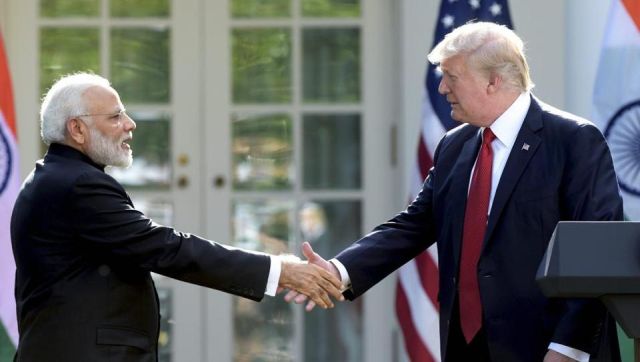
by Editor | May 25, 2021 | News, Opinions
India and the US must discover how to work closely together in order to earn the strategic partnership label and become “one of the defining partnerships of the 21st century,” writes Frank F Islam

Frank F. Islam
This past December, the United States and India celebrated the 60th anniversary of the first visit of a US President to India. That President was Dwight Eisenhower (Ike). Since then five other Presidents have come to India. Their visits and they have all had an impact on the manner in which US-India relations have evolved.
In my opinion, there have been three stages for the US- India relations to date:
- 1947 – 1990: Fledgling Relationship
- 1991 – 2016: Strengthening Relationship
- 2017 – 2020: Functional Relationship
I believe the future stage will be a Strategic Partnership. It will start sometime in the period between 2021 – 2030.
1947-1990: Fledgling Relationship
The Fledgling Relationship really began with President Eisenhower’s visit to India in 1959. Indian Prime Minister Nehru had visited the US in 1949. After that though for a variety of reasons there was only nominal interaction between India and the US for the next ten years.
President Eisenhower’s five-day visit changed that. It was memorable and monumental. Ike addressed the Indian Parliament and his remarks were unexpectedly well received and embraced. More than a million people participated in a public rally for him. When he departed, Prime Minister Nehru said that the President leaves India with a “piece of our heart.”
Eisenhower’s trip kicked off this relationship. After it, there was emerging cooperation in areas such as higher education and agriculture. But things did not progress well politically in the ’70s even though President Richard Nixon visited India in July of 1969 and President Jimmy Carter came to India nine years later in January 1978.
Nixon’s spent less than one day in India. It is reported that his trip was intended to try to reduce the tensions and distrust between him and Prime Minister Indira Gandhi. It did not. When Nixon sided with Pakistan during the 1971 Bangladesh War there was no basis for a rapprochement.
President Jimmy Carter came to India for three days after Prime Minister Gandhi was replaced by Prime Minister Morarji Desai in the 1977 elections. He had several meetings and addressed India’s Parliament. This trip early in Desai’s administration could have solidified the relationship. But, the “cold and blunt message” that Carter delivered on India’s detonation of nuclear bombs and a call to sign the Nuclear Proliferation Treaty fell on deaf ears and cooled things off. In addition, a growing economic nationalism in India throughout the ’70s led to the nationalization of some business sectors and forced companies such as Coca Cola and IBM to close operations. After the turbulent ’70s, relations between India and the US were very quiet throughout the ’80s.
1990 – 2016: Strengthening Relationship
India-US relations began to unthaw in the early ‘90s. That was for economic rather than political reasons, however. Because of the acute financial crisis, the Indian economy was liberalized in 1991. This caused American businesses to flock to India and to begin to use their economic, social and political clout to improve US India relations resulting in the U.S. becoming India’s largest trading partner. Three consecutive US Presidents, Bill Clinton, George W. Bush, and Barack Obama heard those messages and traveled to India.
President Clinton made a five-day visit with his daughter Chelsea in March 2000. This visit came after the Indian nuclear tests at Pokhran in 1998 and sanctions imposed by the US. It removed the sanctions and reestablished a somewhat flagging relationship between what was referred to as two “estranged democracies.”
While he was in office, George W. Bush maintained the upward trajectory for the relationship. And, most notably came to India for 2 ½ days with his wife Laura in March of 2006 during which he signed the landmark U.S. India Civic Nuclear Agreement.
President Barack Obama made two trips to India – one in his first term and one in his second – that took U.S. India relations to the next level. The first visit was for three days in November 2010. Obama addressed Parliament during that visit and met with then Prime Minister Manmohan Singh. The second three-day visit was in January 2015 primarily to participate in the Indian Republic Day Celebration with Prime Minister Narendra Modi.
The Obama visits were especially impactful in terms of the public exposure and statements regarding the nature of the relationship between India and the U.S. At various points leading up to, during and after the visits, President Obama referred to that relationship as “one of the defining partnerships of the 21st century.”
Another focus of emphasis for Obama was on economic ties with the President participating in an event organized by the U.S.-India Business Council during each trip. In conjunction with those events, India and the U.S. agreed to and announced billions of dollars of trade deals.
2017- 2021: Functional Relationship
President Donald Trump took office on January 20, 2017. He has not visited India but has said that he would “some time” and Prime Minister Modi is a “very good friend.” There were high hopes from some that US-India relations would continue to strengthen under his presidency. In point of fact, they have not. They have become primarily functional. In my opinion, that is the best that can be expected with and from this President. Partnership, cooperation, and collaboration are not words that are in his vocabulary. Nationalism, isolationism and protectionism are.
This is most true when it comes to trade relations and negotiations. One need only examine the Trump approach to working with Mexico, China, Canada and others to recognize this.
For the first two years of the Trump administration, India got by relatively unscathed compared to many other nations. Near the end of 2018, Alice Wells, the Acting Assistant Secretary of State for South and Central Asia told the Press Trust of India, “This has been a landmark year for US-India ties as we build out stronger relationships across the board.”
Then, in the first half of 2019 things became unhinged as relations were strained and India and the US got into a tit-for-tat tariff war after the US terminated India’s Generalized System of Preferences which allowed India to send certain imports to the US duty-free. By mid-year, cooler heads appeared to be prevailing and there was rumor after rumor that a new trade deal was being cut and would be announced soon.
On September 24 at the UN meeting in New York City, Trump said “And, I think very soon, we’ll have a trade deal.” At a December 11 meeting of South Asia experts convened in Washington DC jointly by the South Asia Center of the Atlantic Council and the Asia Group on the sixtieth anniversary of Ike’s India visit, Acting Secretary Wells stated “The talks are in a better place. They take much longer than we would like. The deal will be modest but hopefully a stepping stone to a more ambitious trade liberalization.”
She went on to caution, “If India wants to be an exporter, if India wants to use trade to drive job production and to address some of the economic challenges it is currently facing, it needs to be competitive in its exports, which many companies say right now, it’s not because of the tariff barriers.”
There will undoubted be a trade deal and it will probably be some time soon. But, in spite of the fact that President Trump has hosted Prime Minister Modi at the White House in 2017 and played second fiddle to Modi at the massive “Howdy Modi” event in Houston Texas in September 2019 there will not be a really strong strategic relationship between India and the U.S. That is primarily due to the fact that such a relationship is contrary to President Trump’s modus operandi and personal style.
2021 – 2030: Strategic Partnership
India and the U.S. will have a strategic partnership in the future, however. It will come after President Trump is no longer in office. If Trump loses his 2020 re-election bid, that partnership could start being developed as soon as 2021. If he wins, it will not start developing until 2026.
The reason that such a partnership is likely is that there are many driving force factors that will eventually bring it about. The primary ones include:
- Shared democratic values and common geopolitical interests. President Eisenhower’s early connection to India was based on both of these issues. The recent emergence of China and Russia on the world stage make bonding between US and India much more important than it was sixty years ago.
- Trade and commerce. While there have been a few strident talking points in the past two years, US goods exports to India went up significantly in 2018 as did US imports from India. Trade may be off in 2019 because of the conflicts in the past year. But, the figure set by CUTS International of $500 billion in terms of US-India trade by 2030 seems imminently doable.
- The presence of an ever-growing and influential Indian-American community. By the time the next US census takes place the population will be over the four-million mark. There are also five Indian Americans in the US Congress.
President Dwight Eisenhower was a visionary. Speaking to India’s Parliament in 1959, he stated that the welfare of India and the US were linked together.
The prospect and potential that he envisioned for an alliance between India and the US is being realized. There is still quite a way to go to achieve it fully and there are no guarantees it will happen because the future is promised to no one.
Either country could lose its course and make the partnership less feasible if it abandons its commitment to a unifying and uplifting democracy. India and the US must discover how to work closely together in order to earn the strategic partnership label and become “one of the defining partnerships of the 21st century.”
The journey has begun. Time and tenacity will determine how and where it will end.
(The writer is a civic and thought leader based in Washington DC. He can be contacted at ffislam@verizon.net)
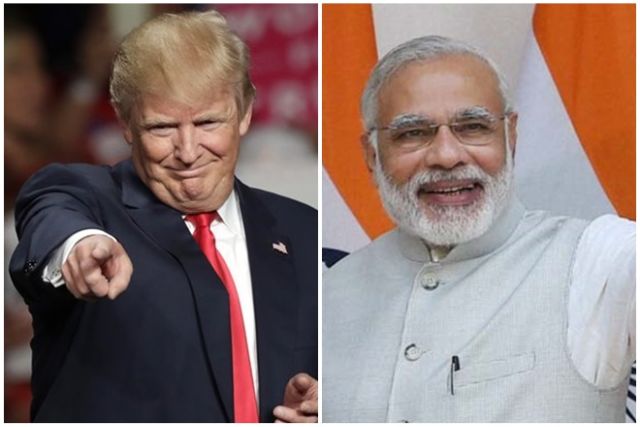
by Editor | May 25, 2021 | Opinions
As the economy slows, a pact will send the right message to investors, and change the narrative about India
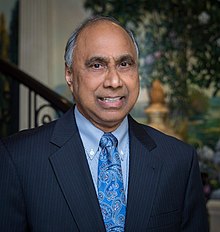
Frank F. Islam
During Prime Minister Narendra Modi’s visit to the United States (US) in September, in which President Donald Trump made a cameo appearance at the “Howdy Modi” event in Houston, the two leaders were expected to announce a trade deal. But, the two sides could not agree on the contours of such a deal before that landmark trip ended.
Media accounts suggested that, over subsequent weeks, New Delhi and Washington appeared to be near a trade deal several times. Nonetheless, as 2019 draws to a close, India and the US are still without a deal.
Two recent bilateral visits give hope, however, that the two countries might reach an agreement soon. In mid-November, India’s commerce and industries minister Piyush Goyal visited Washington to hold discussions with the US Trade Representative (USTR), Robert Lighthizer. And, subsequently, a USTR delegation was in India to continue the talks. Reports say that the two sides are nearing a breakthrough. At a time of general economic slowdown, a trade deal with the US in the waning days of the year would end the economic news for India on a high note.
It is worth noting that since India opened up its economy, the US-India bilateral trade has grown at a spectacular rate. The trade in goods increased from $5 billion in 1991 to nearly $88 billion last year. In 2018, India was America’s ninth largest goods export market. When trade in services is also included to the mix, the volume of bilateral trade last year was $142 billion.
This huge increase in the trade volume does not mean that the two countries were or are on the same page on every trade issue. The US continues to voice its long-standing concerns in primarily two areas: Lack of adequate market access and protection of US intellectual property rights in India. Over the years, India has listened to these concerns and has made concessions. The result is there for all to see: Last year, American companies exported goods exports worth $33.5 billion and services to the tune $25.2 billion to India.
The concerns about market access and intellectual property rights have never become wedge issues in the US, except during presidential election cycles. For example, President George W Bush imposed tariffs on Indian steel to woo voters in the critical battleground state of Ohio, ahead of his 2004 campaign. Not to be outdone, his challenger Senator John F Kerry vigorously went after the Indian outsourcing industry.
President Donald Trump has stated that he believes trade wars are good for the US economy. While trade disputes with Canada, Mexico and China have attracted most of the headlines, Trump has opened new battlefronts with a number of countries, including India.
In May, his administration escalated the disputes with India, when it ended Indian participation in the Generalized System of Preferences (GSP), which had allowed India to export a number of goods to the US at low tariffs for decades. In retaliation, India increased tariffs on 28 US goods.
In the latest rounds of talks, the two countries have reportedly agreed on tariff concessions on dozens of fruits and nuts products, and are close to a deal on medical devices. The major remaining challenge seems to be finding common ground on agricultural products.
This is because Trump is very sensitive about the loss suffered by famers in the US midwest, after China imposed huge tariffs on American agribusiness products as a retaliatory measure. With the midwest farmers critical to Trump’s re-election prospects, the White House has spent tens of billions of dollars in subsidy to those farmers to offset their losses. Getting concessions on agricultural products in a deal with India would resonate with this targeted constituency.
From the Indian side of the ledger, it is likely a good idea for India to yield an inch, a foot , and possibly even a yard , in the ongoing trade talks. New Delhi has more to gain than to lose .
First, it will help change the narrative about the economy. Most rating agencies have downgraded their growth projections for India for next year. A trade deal would reassure US and other foreign investors about India’s future economic prospects.
Second, the US-China trade war has forced many American companies to explore alternative options for manufacturing. For India to take advantage of this vacuum, it has to establish a more predictable trade environment.
Finally, a trade deal has become even more important after India’s decision to stay out of the Regional Comprehensive Economic Partnership (RCEP). The size of the economies of RCEP partners, in the aggregate, rivals the combined economies of the US and Europe.
It is in India’s interest to conclude the ongoing trade talks with the US productively. That does not mean giving away the store, but it does mean being flexible and keeping the larger economic story in mind.
As the axiom goes — and contrary to what the US President believes or says — there are no winners in a trade war. Similarly, a sound trade agreement has no losers.
Frank F Islam is an entrepreneur, civic leader, and thought leader based in Washington, DC. The views are expressed here are personal
Courtesy: This article first appeared in the Hindustan Times
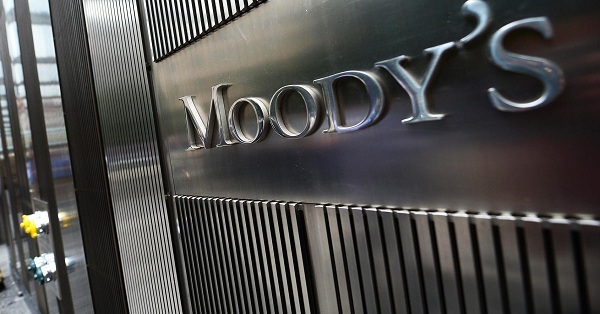
by Editor | May 25, 2021 | Corporate, Corporate Buzz
 New Delhi : Reacting to US President Donald Trump’s decision to delay the date for American tariff hike on Chinese goods, US ratings agency Moody’s on Monday said although the compromise reached had become increasingly likely, the US-China relationship would continue to be contentious, “swinging between compromise and conflict”.
New Delhi : Reacting to US President Donald Trump’s decision to delay the date for American tariff hike on Chinese goods, US ratings agency Moody’s on Monday said although the compromise reached had become increasingly likely, the US-China relationship would continue to be contentious, “swinging between compromise and conflict”.
Reporting substantial progress in the US-China trade talks, Trump on Sunday announced that he would delay the March 1 deadline to increase American tariffs on Chinese goods.
Trump said he would like to have a summit with his Chinese counterpart Xi Jinping at his Florida resort to finalise a trade agreement.
“An extension of the March 1 deadline had become increasingly likely in recent weeks and is part of our baseline assumptions,” Moody’s Investors Service MD (Sovereign Risk Group) Marie Diron said in a note.
“While some compromise may be reached between the US and China on certain trade matters, the process is unlikely to be smooth and the US-China relationship should remain contentious, swinging between compromise and conflict, and involving frictions not only on trade, but also on technology, investment and geopolitics,” she said.
The Trump administration had set March 1 deadline for a trade deal in the US-China talks or else Washington would hike tariffs from 10 per cent to 25 per cent on yearly imports of Chinese goods worth $200 billion.
The announcement comes as Trump prepares to meet North Korean leader Kim Jong-un for the two-day second summit in Hanoi, Vietnam, starting Wednesday.
Earlier on Sunday, Trump tweeted about the role China is playing ahead of talks with the North Korean leader. “President Xi of China has been very helpful in his support of my meeting with Kim Jong-un. The last thing China wants are large-scale nuclear weapons right next door,” he wrote on Twitter.
He also tweeted it had been “a good weekend for US and China” in trade talks.
The President’s announcement followed days of negotiations in which American and Chinese officials met last week near the White House to work line-by-line through a handful of documents covering intellectual property, services and subsidies, according to the New York Times.
An American delegation is expected to travel to Beijing soon to resolve the remaining differences.
The trade war between the world’s two biggest economies was sparked by Trump’s aggressive protectionist stance and has generated uncertainty and volatility in international financial markets for months.
—IANS

by Editor | May 25, 2021 | World
 Washington : US President Donald Trump has delayed the March 1 deadline to increase American tariffs on Chinese goods and said that he would be planning a summit with his Chinese counterpart Xi Jinping at his Florida resort to finalise a trade agreement.
Washington : US President Donald Trump has delayed the March 1 deadline to increase American tariffs on Chinese goods and said that he would be planning a summit with his Chinese counterpart Xi Jinping at his Florida resort to finalise a trade agreement.
“I am pleased to report that the US has made substantial progress in our trade talks with China on important structural issues including intellectual property protection, technology transfer, agriculture, services, currency, and many other issues,” Trump said on Sunday in a series of tweets.
“As a result of these very productive talks, I will be delaying the US increase in tariffs now scheduled for March 1. Assuming both sides make additional progress, we will be planning a summit for President Xi and myself, at Mar-a-Lago, to conclude an agreement. A very good weekend for US and China.”
The Trump administration had set March 1 as the deadline whereby a trade deal had to be reached in the US-China talks or else Washington would hike tariffs from 10 to 25 per cent on some $200 billion in yearly imports of Chinese goods.
The announcement comes as Trump prepares to meet North Korean leader Kim Jong-un for their second summit in Hanoi, Vietnam, on Wednesday and Thursday.
Earlier on Sunday, Trump tweeted about the important role China is playing ahead of the talks with Kim, saying: “President Xi of China has been very helpful in his support of my meeting with Kim Jong-un. The last thing China wants are large scale nuclear weapons right next door.
“Sanctions placed on the border by China and Russia have been very helpful. Great relationship with Chairman Kim.”
In the Oval Office on Friday, Trump expressed similar optimism about trade negotiations with China, predicting there was a “very good chance” that the US and China would reach a trade agreement.
Trump also suggested that if substantial progress was made, he “would be inclined” to allow up to a month longer for negotiations.
The President’s announcement followed days of negotiations in which American and Chinese officials met last week near the White House to work line-by-line through a handful of documents covering intellectual property, services and subsidies, The New York Times reported.
The Chinese were ready to commit to billions of dollars of purchases of American soybeans, beef, natural gas and other products, though they have resisted more structural changes to their economy.
An American delegation is expected to travel to Beijing soon to continue to work out the remaining differences.
The trade war between the world’s two biggest economies was sparked by Trump’s aggressive protectionist stance and has generated uncertainty and volatility in international financial markets for months.
—IANS








